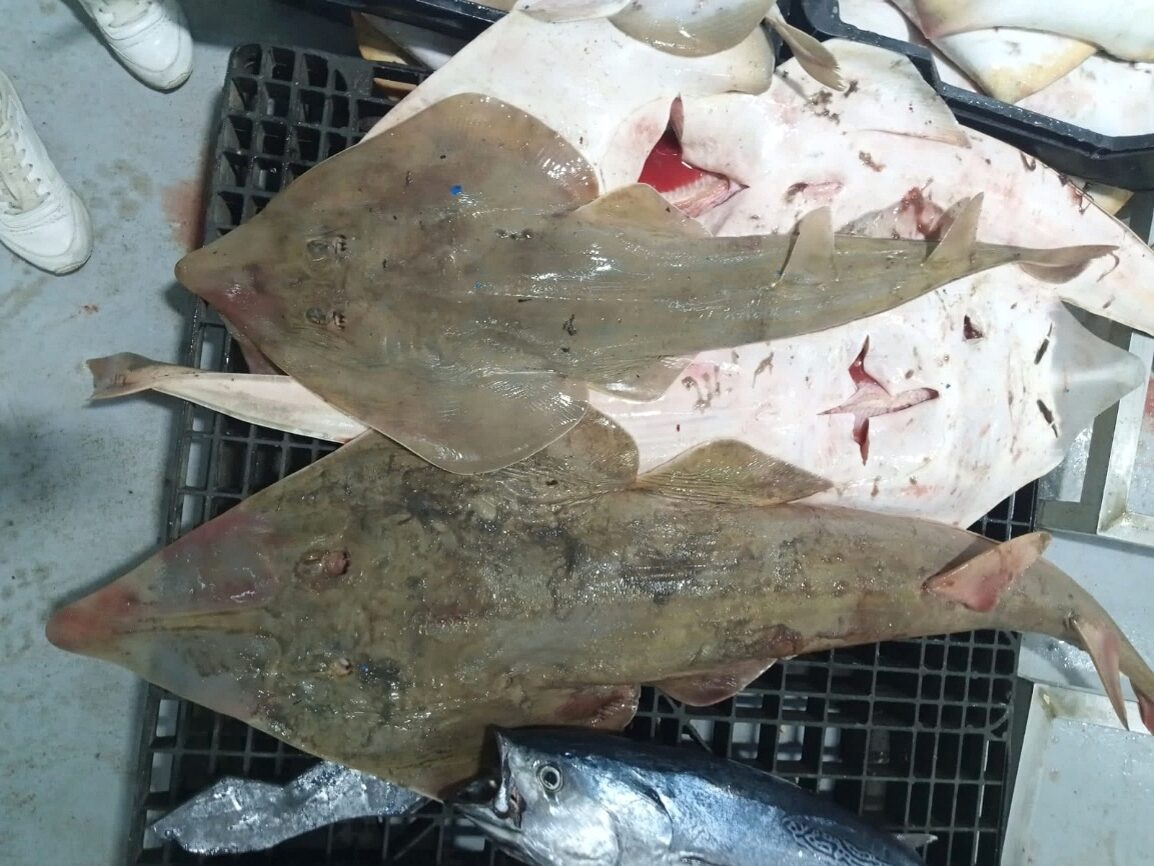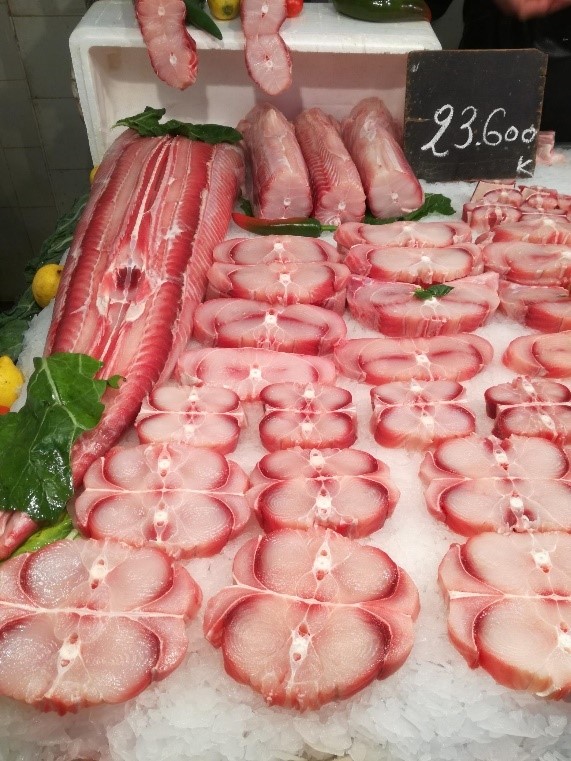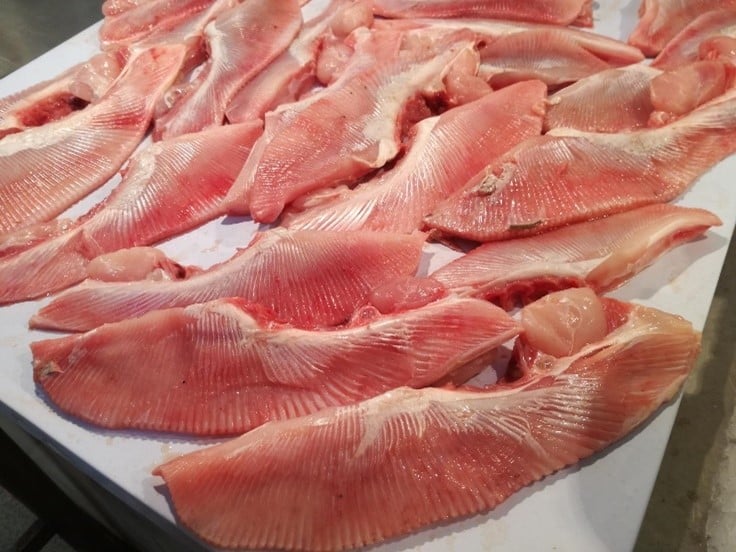The Gulf of Gabès: a valuable habitat for guitarfishes
Situated off the south-east coast of Tunisia, the Gulf of Gabès is known for being one of the most productive ecosystems in the Mediterranean Sea. Yet with that, come high levels of exploitation; the area is subject to intense fishing pressure, with the third highest number of active fishing boats in the Mediterranean (FAO 2020). It also is home to two species of Guitarfish, both of which are Critically Endangered and whose meat is commercialised at local markets. Fisheries management is further complicated by the predominantly artisanal nature of the fishing fleets and their diversity.
Understandably, it’s a particularly risky place to be a Guitarfish.
The shallow and biodiverse waters of the Gulf of Gabès provide a wonderful habitat for the Critically Endangered guitarfishes: the Blackchin (Giant) Guitarfish (Glaucostegus cemiculus) and the Common Guitarfish (Rhinobatos rhinobatos). Samira Enajjar, one of our local partners based in Tunisia, has previously shown that the area serves as a nursery for these species, and that juveniles remain in it up until they reach their size-at-maturity.

Guitarfishes at landing site in Sfax (top: Rhinobatos rhinobatos, bottom: Glaucostegus cemiculus). Photo © Saidi Bechir
Despite existing regulations (GFCM/42/2018/2) which prohibit their retention, landing and sale, these guitarfishes are caught accidentally by a variety of fishing gear, including trawls, bottom longlines, trammel nets, and gillnets. Specific gillnets locally named “Garracia” with a relatively large mesh size of ~17 cm, are used to target larger guitarfish individuals during the summer months when they venture inshore to reproduce.

Local gillnets 'Garracia'. Photo © Saidi Bechir
Their tail and trunk meat is presented at market in recognisable ‘steaks’ with a distinct cross section, along with pectoral fins.


Top: tail/trunk meat and cross section as prepared for sale at a market in Tunis. Bottom: pectoral fins as prepared for sale at a market in Tunis. Photo © Ali Hood
We’re working to understand the importance of guitarfishes to these fisheries, quantify levels of target fishing and bycatch, and begin to educate fishers on the threats of unsustainable fishing on these species, with an end goal of seeing the adoption and implementation of the regional prohibition. As the first phase of the project, our project partner ASCOB Syrtis in Tunisia has been leading structured landings and market surveys to work out species occurrence and gears responsible for the catch of guitarfishes (both target and incidental).
So far, we’ve had some interesting findings. One of which is the fact that the highest levels of catch rates for both species appears to be from bottom longlines (until now assumed a ‘bycatch’ fishery), which raises the question of whether this fishery is indeed ‘accidentally’ catching guitarfishes, or if they are targeting them directly. Another interesting observation is that each batch of guitarfishes examined were of the same sex – perhaps suggesting sexual segregation in these guitarfish species.
My route into marine conservation was not exactly the conventional one. After completing my undergraduate degree in French, German and Spanish, I pursued a master’s degree in marine Conservation. My role in this project allows me to merge my two backgrounds, using my language skills to discuss project finds and objectives in French. This allows our Tunisian colleagues to converse in their second, rather than third language, a nice place to meet in the middle before I take on the challenge of learning Arabic!
Our results so far highlight just how much remains unknown about these species and therefore underline the need for continued data collection to complete the puzzle on their movements, distribution and fisheries interactions. It is only with a comprehensive understanding of local fisheries and species ecology, that we can begin to implement effective management strategies and lead these species towards a brighter future.
**Reference
FAO. 2020. The State of Mediterranean and Black Sea Fisheries 2020. General Fisheries Commission for the Mediterranean. Rome.
